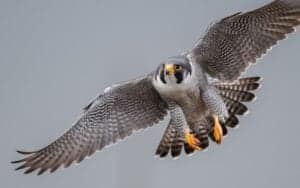Quail are small yet distinctive birds that are characterized by their short legs and stocky, round-shaped bodies. Their color varies between species, but they all have short, curved beaks. Many of these adorable birds even have a cute little feathered plume on the top of their head too! Quail are ground-feeders and typically prefer to live in fields and cropland. These fascinating birds are best known for their unusual call and their short yet fast flights. But that’s not all there is to learn about them, so join us as we discover 10 incredible quail facts!
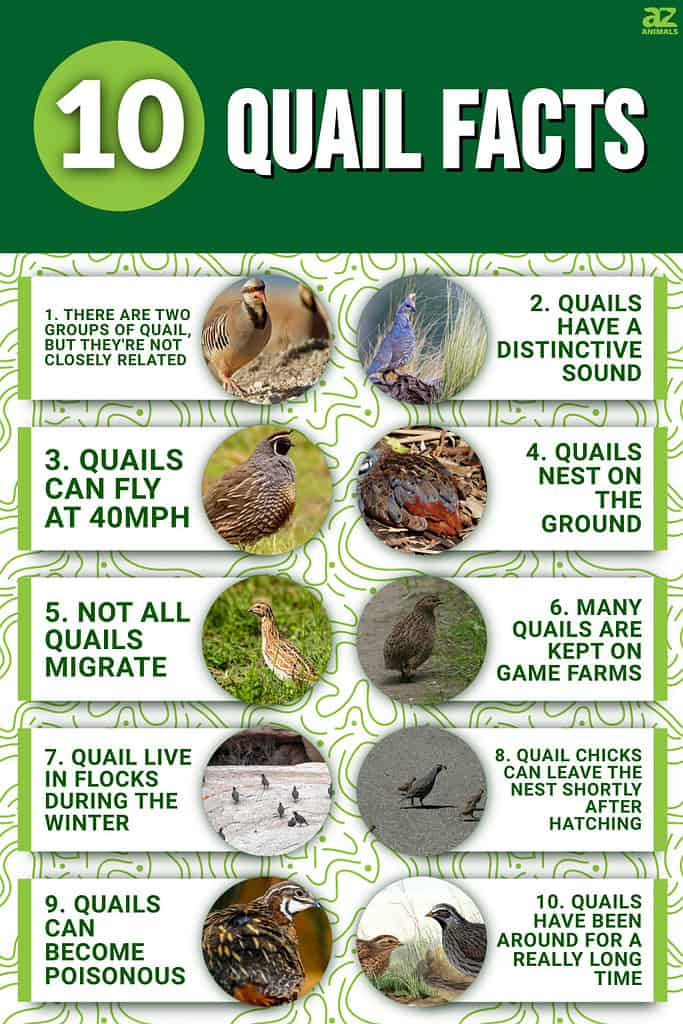
1. There are Two Groups of Quail, but they’re not Closely Related

Partridges, like this chukar, are members of the family group
Phasianidae, part of the Old World quails.
©Martin Pelanek/Shutterstock.com
There are approximately 130 species of quail alive today, and they are divided into two groups – Old World and New World. Old World quails are members of the family group Phasianidae and are native to Australia, Africa, Asia, Europe, and New Zealand. Phasianidae is known as the pheasant family and includes pheasants, partridges, chickens, and turkeys. New World quails are the sole members of the family group Odontophoridae and are native to the Americas. Although members of both groups are classed as quails, they are not that closely related. Instead, they are named because of the similar characteristics that they share – such as their appearance and habitat.
2. Quails have a Distinctive Sound

It’s more common to hear than to see a quail, and the best time to hear one is at dawn or in the evening.
©Danita Delimont/Shutterstock.com
Quails are extremely shy birds, and it is more common to hear them than to see them. Most quails have a very distinctive sound which is known as “wet-my-lips.” Their call tends to sound like “sip-sip-sip” or “whit-whit-whit.” The best time to hear a quail is in the early morning and evening.
3. Quails can Fly at 40mph

Quails can fly at 40mph over short distances.
©iStock.com/Banu R
Incredibly, quails can fly at speeds of up to 40mph. However, although some species are migratory, most can only fly for short distances of approximately 100 yards. Usually, this short but fast flight is used to escape predators or to reach a roost. However, in some cases, they prefer to first run and hide when threatened and only break into a flight when they have no option.
4. Quails Nest on the Ground

Quails are ground-dwelling birds, making their nests on the ground in fields or grasslands where vegetation abounds.
©Andreas Ruhz/Shutterstock.com
Quail are known as ground-dwelling birds, and they nest on the ground. They typically nest in grasslands and fields in areas with plenty of vegetation for cover, although sometimes they can be underneath bushes. The nests are usually just a shallow depression in the ground which is around 5 to 7 inches wide and is lined with grass, leaves, and twigs. Most clutches contain 12 to 16 eggs, and they can rear two broods per year.
5. Not all Quails Migrate
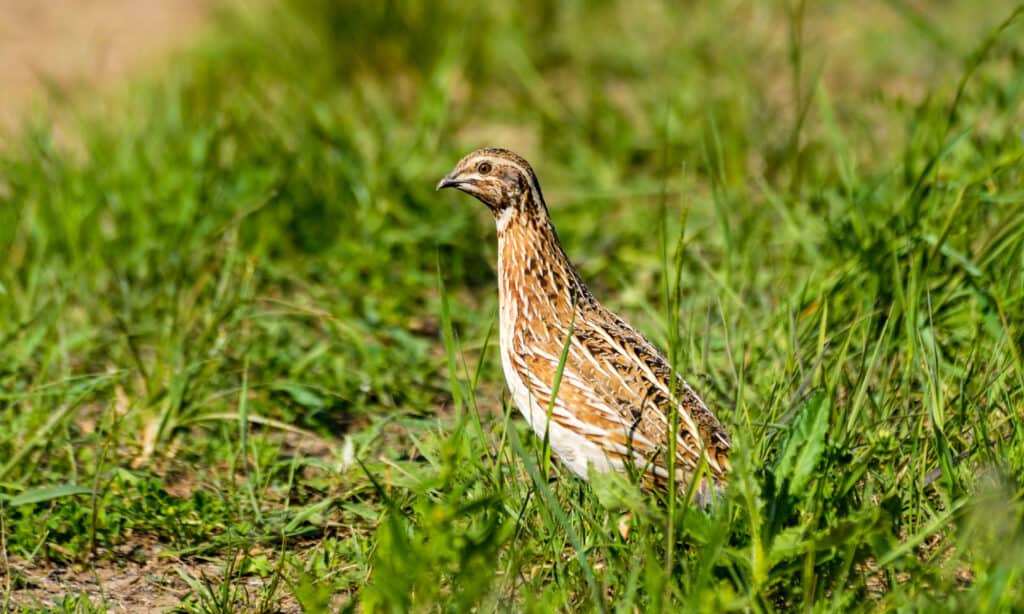
Common quails are a better-known species of migratory quails.
©iStock.com/VictorTyakht
As we mentioned earlier, some species of quail are more capable of flying than others, and these are the ones that migrate. Not all quails migrate, and common quails are one of the better-known species of migratory quails. Some species of quail migrate south to Africa for the winter and then return north to Europe for the spring and summer breeding season, while others stay put in their resident locations all year round.
6. Many Quails are Kept on Game Farms

Quail are popular birds that are often raised for their meat.
©Duncan Wright / Creative Commons – Original
Quails are extremely popular game birds and their meat is widely eaten around the world. Although there are many wild species of quail, quite often quails are kept on large game farms and bred specifically for sport and for their meat. They are also good egg producers and can be kept specifically for that too. In some cases, quail can be tamed, but due to their skittish nature, it is not often easy to do.
7. Quail Live in Flocks During the Winter
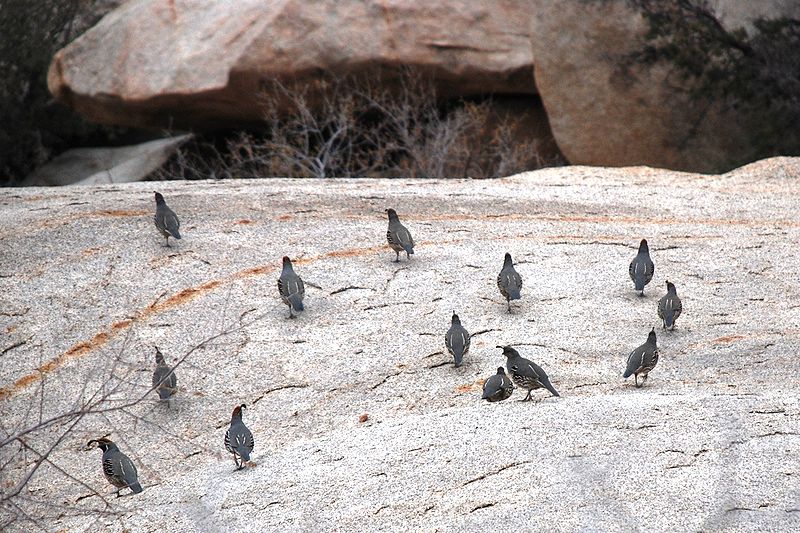
Quail congregate in groups of 8 to 25 in winter months to face the cold weather together.
©Jarek Tuszynski / Creative Commons – Original
For most of the year, quails live alone or in pairs. However, in the winter, they live in flocks known as coveys which usually consist of between 8 and 25 birds. One of the main reasons for this is so that they can gather together for warmth. They do this by sitting together on the ground or while roosting on tree branches to combat the cold winter weather. If they are sitting on the ground, then they usually sit in a circle with their backs to the outer side. This allows them to keep their heads out of the wind and helps them to retain as much body heat as possible.
8. Quail Chicks can Leave the Nest Shortly after Hatching
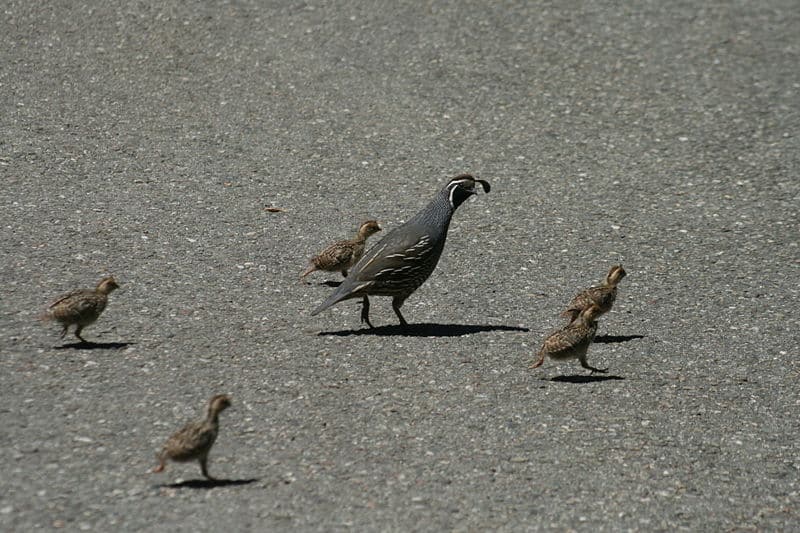
Quail chicks are active shortly after birth and are able to leave the nest almost immediately.
©Brocken Inaglory / Creative Commons – Original
Often when baby birds hatch, they need to remain in the nest where for several weeks so that they can remain safe and warm, relying entirely on their parents to bring them food. However, quail chicks are unusual as they are able to leave the nest shortly after hatching – typically within 24 hours. They are quickly able to walk easily and follow their mother, and are able to peck around for food. The main advantage of this is that they can get away from the ground-based nest where predators can be attracted to the smell of the freshly hatched eggs.
9. Quails can become Poisonous
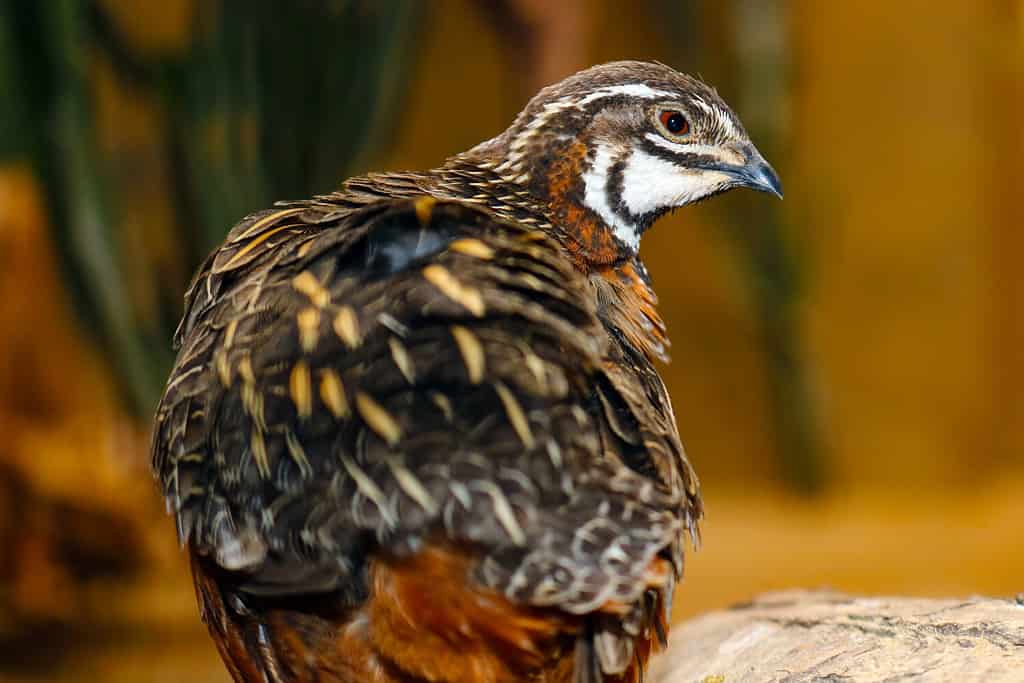
By eating plants that contain poisonous toxins, a quail itself can be toxic if its meat is consumed.
©markusmayer/Shutterstock.com
One of the most fascinating (and slightly scary) things about quails is that they sometimes eat poisonous plants such as hemlock or hellebore. Although the quails can eat these plants with no ill effects to themselves, they manage to store the toxins within themselves, which taints their meat. Therefore, when people eat their meat, they become poisoned by them. This is known as “coturnism” and causes the breakdown of muscle cells as well as muscle tenderness. Incredibly, it is most often migrating quails that are poisonous, with the most cases being reported during migration season.
10. Quails have been around for a Really Long Time
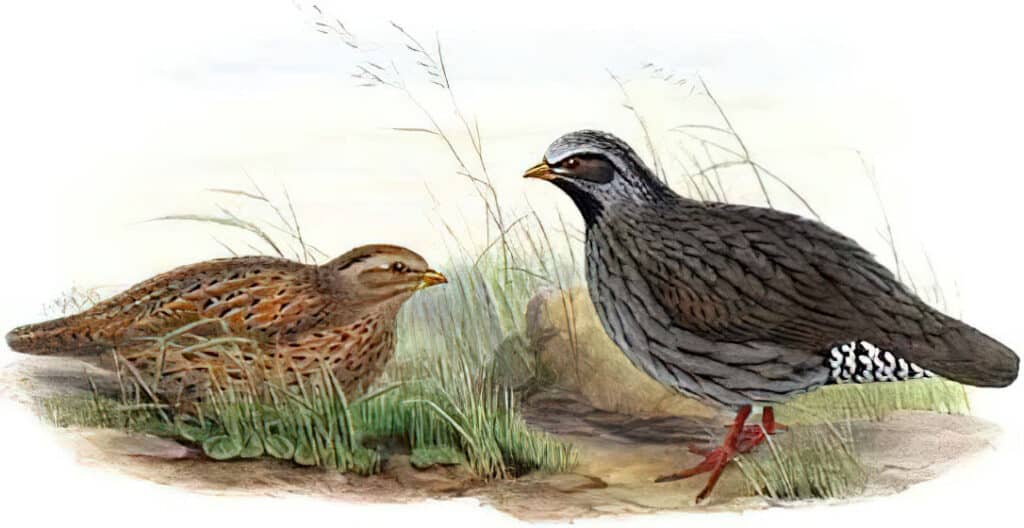
Quails were domesticated around 4,000 years ago, and were kept as songbirds in Japan.
©John Gould (1804–1881) / public domain – Original / License
Surprisingly, these adorable birds have been around for a really long time – and spent much of it alongside us, humans, too. Incredibly, they have been domesticated for around 4,000 years. Although they were bred largely for their meat, in the 11th century, they were actually kept as songbirds in Japan!
Thank you for reading! Have some feedback for us? Contact the AZ Animals editorial team.





